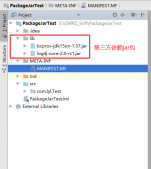本文實例為大家分享了java對數組、集合的排序方法,供大家參考,具體內容如下
對數組的排序:
|
1
2
3
4
5
6
7
8
|
//對數組排序public void arraySort(){ int[] arr = {1,4,6,333,8,2}; for(int i=0;i<arr.length;i++){ System.out.println(arr[i]); }} |
對集合的排序:
|
1
2
3
4
5
6
7
8
9
10
11
12
13
14
15
16
17
18
19
20
21
22
23
24
25
26
27
28
29
30
|
//對list升序排序 public void listSort1(){ List<Integer> list = new ArrayList<Integer>(); list.add(1); list.add(55); list.add(9); list.add(0); list.add(2); Collections.sort(list);//使用Collections的sort方法 for(int a :list){ System.out.println(a); } } //對list降序排序 public void listSort2(){ List<Integer> list = new ArrayList<Integer>(); list.add(1); list.add(55); list.add(9); list.add(0); list.add(2); Collections.sort(list, new Comparator<Integer>() { public int compare(Integer o1, Integer o2) { return o2 - o1; } });//使用Collections的sort方法,并且重寫compare方法 for(int a :list){ System.out.println(a); }} |
注意:Collections的sort方法默認是升序排列,如果需要降序排列時就需要重寫conpare方法
以上就是本文的全部內容,希望對大家的學習有所幫助,也希望大家多多支持服務器之家。













